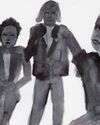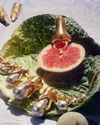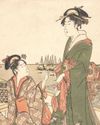How a new group of male ballet dancers is highlighting queer stories and struggles — and asking us to rethink what masculinity is.

1. THE BALLERINO
WHEN I WAS 15, I met a dancer from Canada’s Royal Winnipeg Ballet. The company had come to Los Angeles to dance in the Olympic Arts Festival, and my parents volunteered to host a post-performance dinner in our backyard. I recall about 200 people — family friends, Olympic officials and maybe 25 dancers — eating curry (is that right?) off paper plates. But that’s not what this is about. No, this is about the ballerino — my word for him — I met and what he represented to a lonely gay kid in Southern California in 1984, a kid who had never before met another gay person. Earlier that evening, I had seen the dancer turn, leap and smile onstage, expressing through the mute language of ballet who he was. Something about his movement told me he was gay, and I felt he was dancing not only for himself but for me. Onstage, the ballerino wore brown tights that showed the trunks of his thighs, and everything else. Now he was in loose linen pants with a drawstring belt and an open collar that exposed the rod of his clavicle.
He said hello. I could barely speak. He might have said, “Lovely party”, but that was it, he was on his way. The isolation of my queer youth was about to return. Out of nowhere, I told him he was my favourite ballet dancer in the world.
He seemed startled, and a little embarrassed, but he came to understand what I was trying to say: “If you need someone to talk to, you can write me, care of the Ballet.” The next day, I rode my bike to the library and looked up the address in Winnipeg and sent a letter trying to express something about myself I had never expressed before. Two months later, he wrote back, apologising: He’d been on tour. Although time has devoured that sheet of paper, I still remember the gentle message embedded in his words: One day, you too will find yourself.
2. NOBODY BUT MYSELF
この記事は T Singapore: The New York Times Style Magazine の February 2019 版に掲載されています。
7 日間の Magzter GOLD 無料トライアルを開始して、何千もの厳選されたプレミアム ストーリー、9,000 以上の雑誌や新聞にアクセスしてください。
すでに購読者です ? サインイン
この記事は T Singapore: The New York Times Style Magazine の February 2019 版に掲載されています。
7 日間の Magzter GOLD 無料トライアルを開始して、何千もの厳選されたプレミアム ストーリー、9,000 以上の雑誌や新聞にアクセスしてください。
すでに購読者です? サインイン

Look At Us
As public memorials face a public reckoning, there’s still too little thought paid to how women are represented — as bodies and as selves.

Two New Jewellery Collections Find Their Inspiration In The Human Anatomy
Two new jewellery collections find their inspiration in the human anatomy.

She For She
We speak to three women in Singapore who are trying to improve the lives of women — and all other gender identities — through their work.
Over The Rainbow
How the bright colours and lively prints created by illustrator Donald Robertson brought the latest Weekend Max Mara Flutterflies capsule collection to life.

What Is Love?
The artist Hank Willis Thomas discusses his partnership with the Japanese fashion label Sacai and the idea of fashion in the context of the art world.

The Luxury Hotel For New Mums
Singapore’s first luxury confinement facility, Kai Suites, aims to provide much more than plush beds and 24-hour infant care: It wants to help mothers with their mental and emotional wellbeing as well.

Who Gets To Eat?
As recent food movements have focused on buying local or organic, a deeper and different conversation is happening among America’s food activists: one that demands not just better meals for everyone but a dismantling of the structures that have failed to nourish us all along.

Reimagining The Future Of Fashion
What do women want from their clothes and accessories, and does luxury still have a place in this post-pandemic era? The iconic designer Alber Elbaz thinks he has the answers with his new label, AZ Factory.

A Holiday At Home
Once seen as the less exciting alternative to an exotic destination holiday, the staycation takes on new importance.
All Dressed Up, Nowhere To Go
Chinese supermodel He Sui talks about the unseen pressures of being an international star, being a trailblazer for East Asian models in the fashion world, and why, at the end of the day, she is content with being known as just a regular girl from Wenzhou.